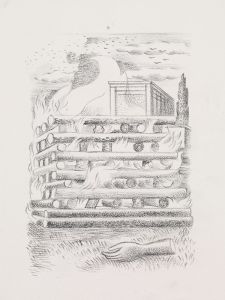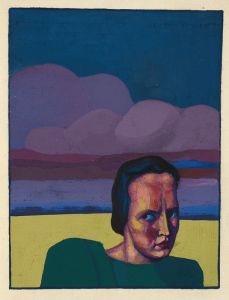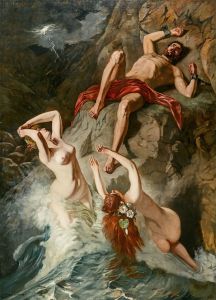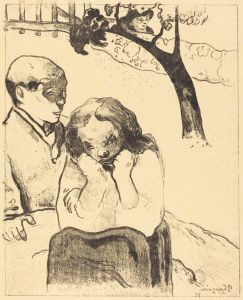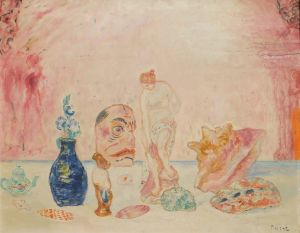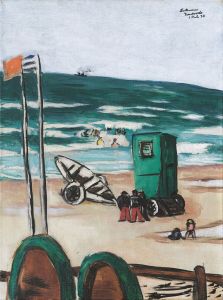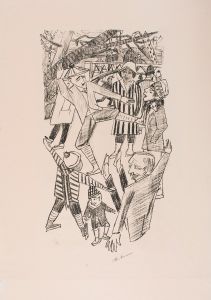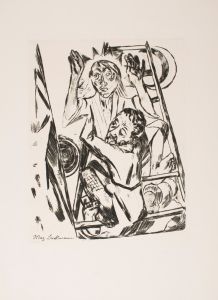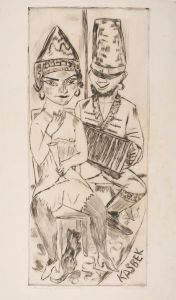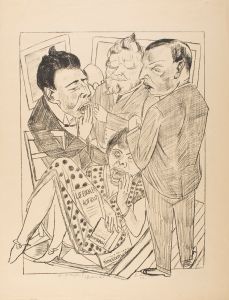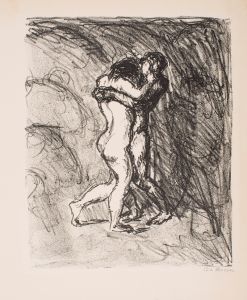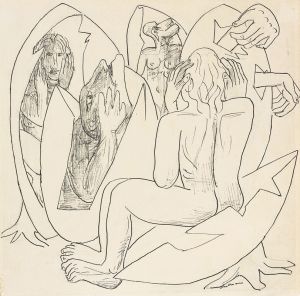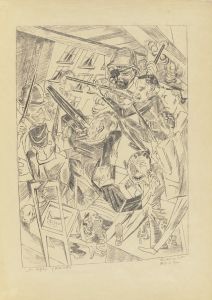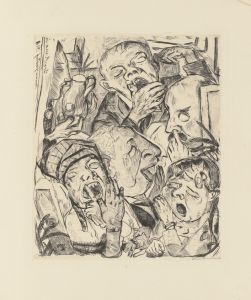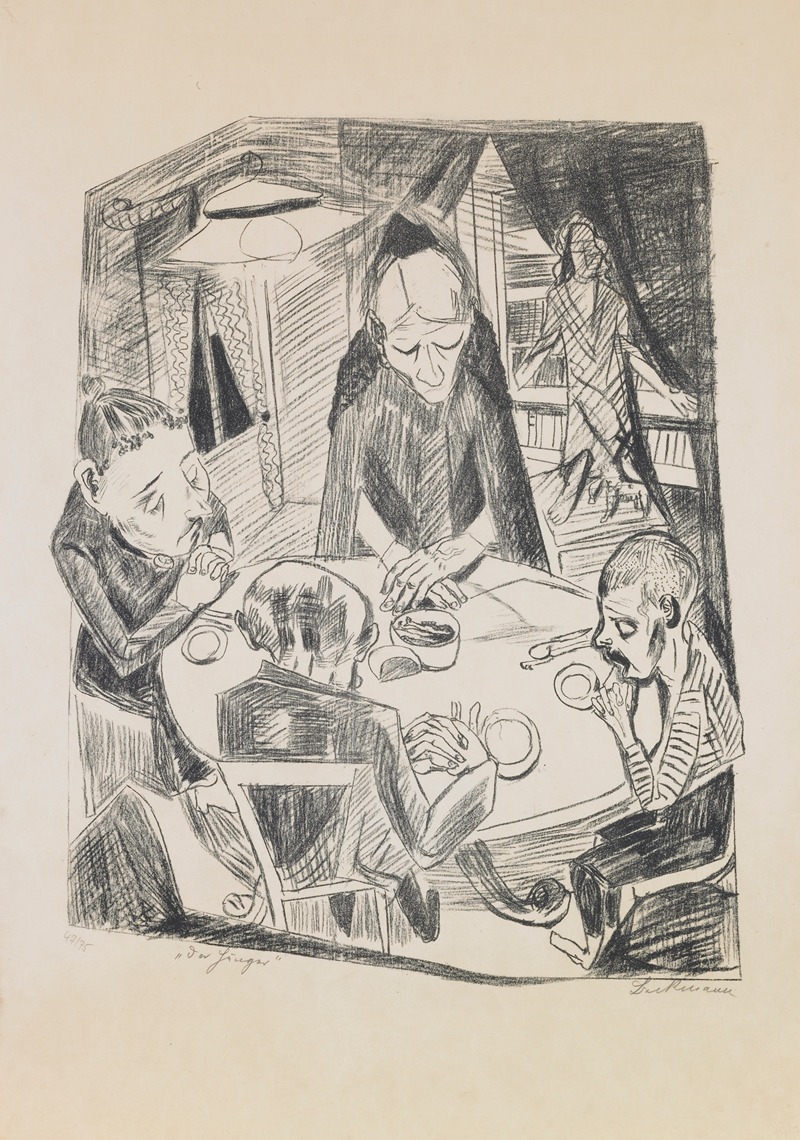
plate 5; Hunger
A hand-painted replica of Max Beckmann’s masterpiece plate 5; Hunger, meticulously crafted by professional artists to capture the true essence of the original. Each piece is created with museum-quality canvas and rare mineral pigments, carefully painted by experienced artists with delicate brushstrokes and rich, layered colors to perfectly recreate the texture of the original artwork. Unlike machine-printed reproductions, this hand-painted version brings the painting to life, infused with the artist’s emotions and skill in every stroke. Whether for personal collection or home decoration, it instantly elevates the artistic atmosphere of any space.
Max Beckmann's Plate 5: Hunger is one of the ten etchings included in his 1919 series titled Die Hölle (The Hell). This series was created in the aftermath of World War I and reflects the social, political, and personal turmoil of the time. Beckmann, a German painter and printmaker, was deeply affected by his experiences during the war, which included serving as a medical orderly. The trauma and disillusionment he endured are evident in the raw and expressive imagery of this series.
Plate 5: Hunger depicts a stark and harrowing scene of deprivation and suffering, characteristic of the widespread hunger and poverty that plagued Germany during the post-war period. The etching portrays emaciated figures in a confined, oppressive space, emphasizing the physical and emotional toll of starvation. Beckmann's use of sharp, angular lines and dense cross-hatching creates a sense of claustrophobia and despair, underscoring the harsh realities faced by many in the aftermath of the war.
The Die Hölle series as a whole is considered a critical commentary on the societal collapse and moral decay Beckmann observed in post-war Germany, particularly during the early years of the Weimar Republic. The series captures the chaos, suffering, and disillusionment of the time, with each plate addressing different aspects of the human condition and the societal upheaval. Plate 5: Hunger specifically highlights the physical and existential struggles of individuals in a society ravaged by war, economic instability, and political unrest.
Beckmann's work during this period marked a departure from his earlier, more traditional style. Influenced by the Expressionist movement, his art became more introspective and confrontational, reflecting his personal experiences and the broader societal context. The Die Hölle series, including Plate 5: Hunger, is widely regarded as a significant contribution to the art of the Weimar era and a powerful example of socially engaged printmaking.
Today, Plate 5: Hunger and the rest of the Die Hölle series are studied as important historical and artistic documents. They provide insight into the psychological and social impact of World War I on Germany and exemplify Beckmann's mastery of the etching medium. The series is held in various museum collections worldwide, including institutions dedicated to preserving and interpreting works from this tumultuous period in history.





